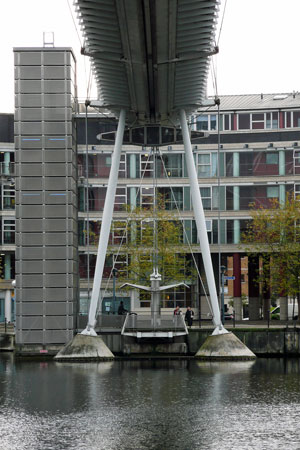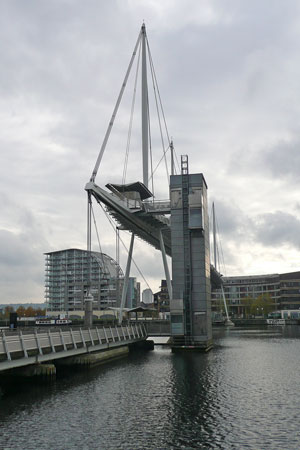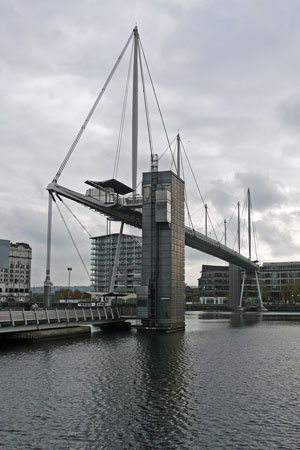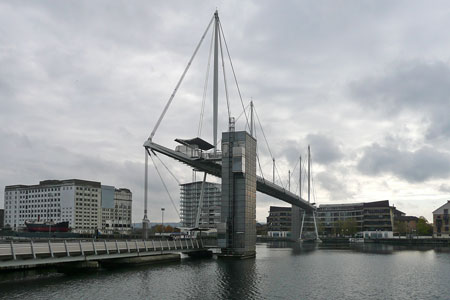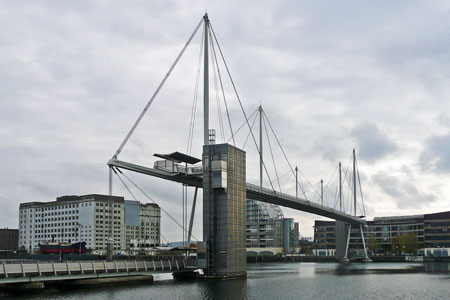|
|
|
| |
All images link to larger
copies which will open in a new window/tab
|
|
|
|
|
|
|
|
|
All images link to larger
copies which will open in a new window/tab
Widnes-Runcorn
Transporter Bridge
The Runcorn-Widnes Transporter Bridge crossed the
river Mersey and Manchester Ship Canal linking the towns of Runcorn and
Widnes. It was completed in 1905 and was Britain's first transporter bridge
and the largest of its type ever built in the world. It continued in use
until 1961 when it was replaced by a through arch bridge, which is now known
as the Silver Jubilee Bridge. The transporter bridge was then demolished.
(Ref: Wikipedia)
Postcards of the Widnes-Runcorn
transporter bridge
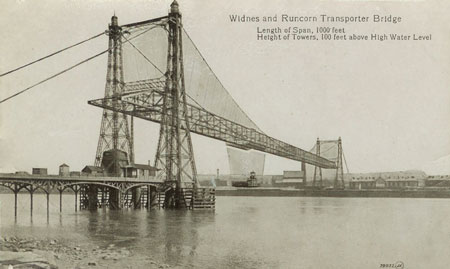
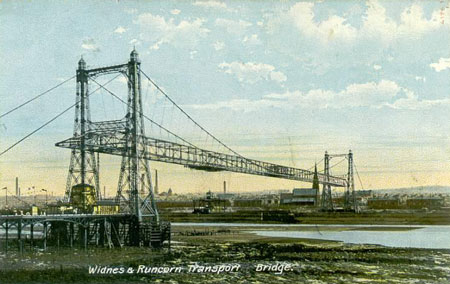
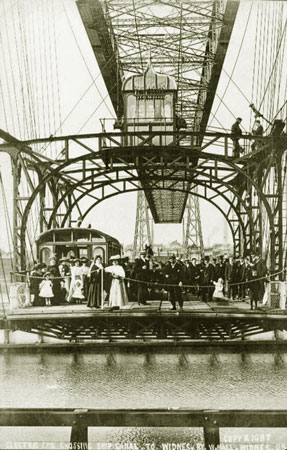
Newport Transporter Bridge
The Newport Transporter Bridge (Welsh: Pont Gludo
Casnewydd) is a transporter bridge that crosses the River Usk in Newport,
South Wales. It is a Grade I listed structure. Designed by French engineer
Ferdinand Arnodin, it was built in 1906 and opened by Godfrey Charles
Morgan, 1st Viscount Tredegar on 12 September 1906. The span is an example
of the very rare transporter bridge concept, of which only eight remain in
use worldwide. The bridge is the crossing lowest on the River Usk.
Postcards of the Newport
transporter bridge
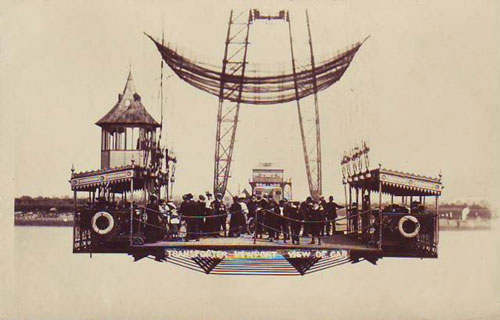
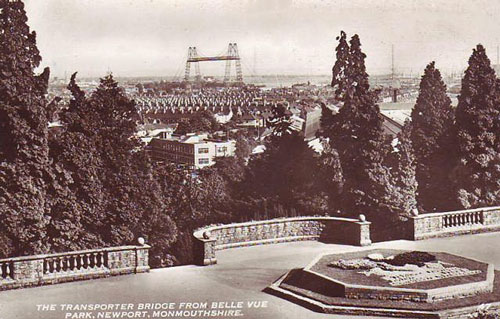
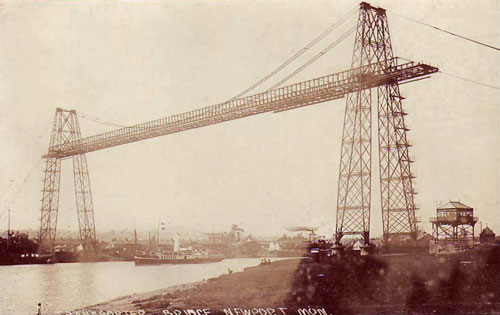
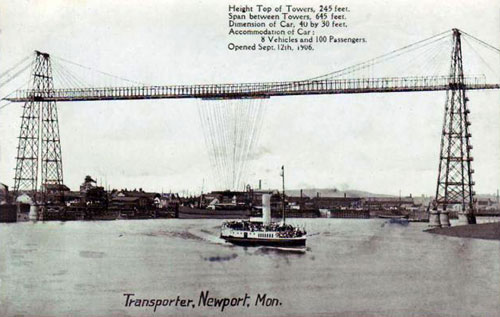

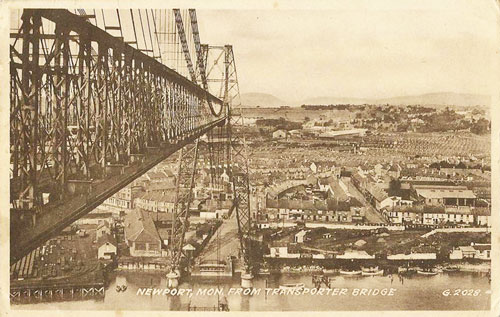
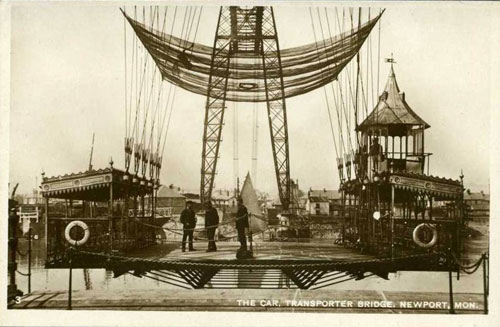
Newport transporter bridge
Photos: © Ian Boyle,4th June 2005
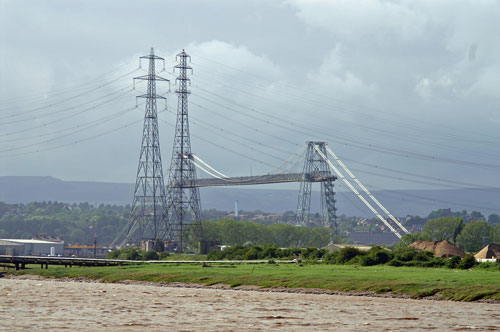
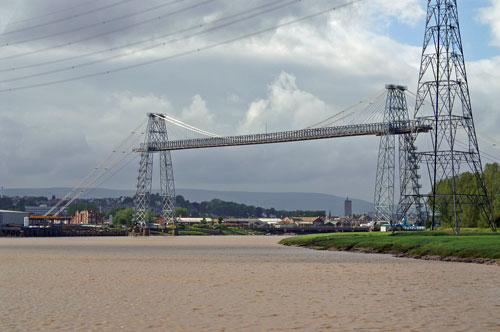
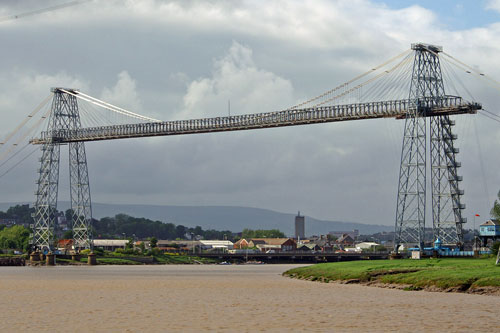
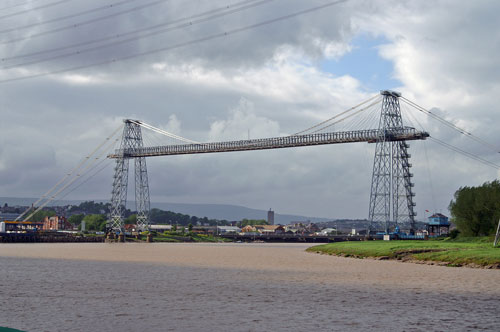
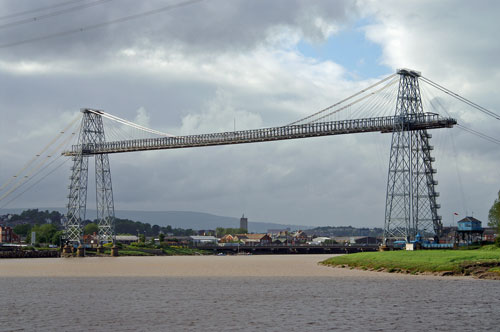
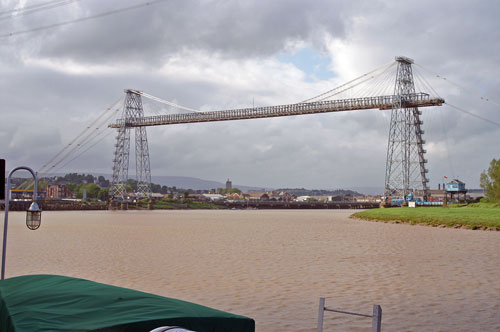
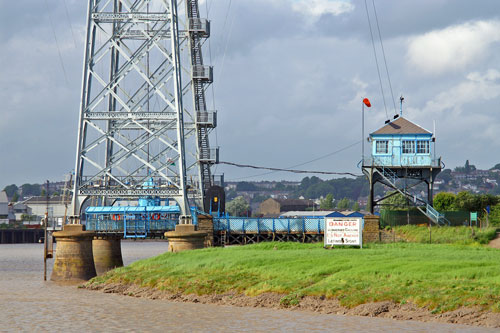
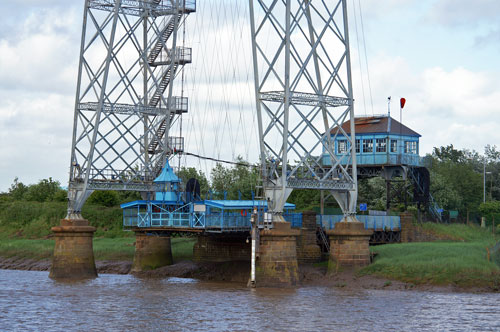
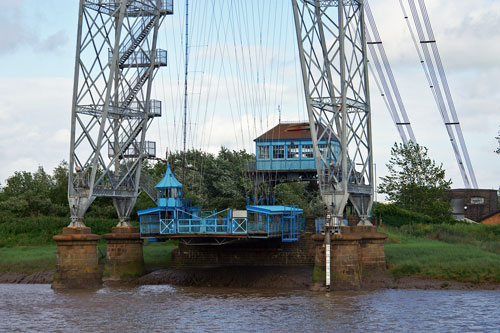
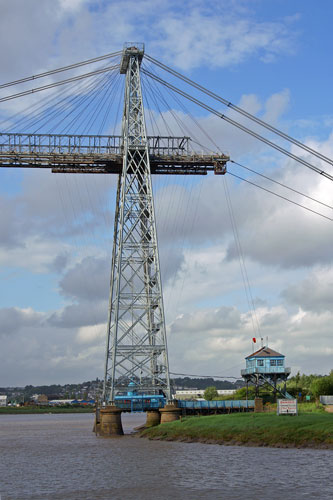

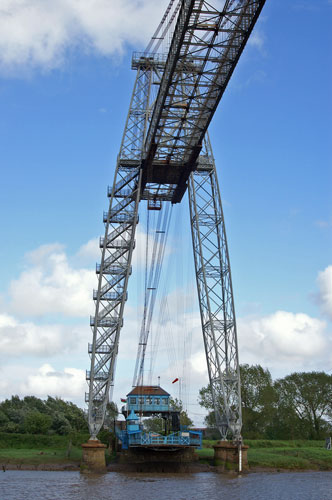
Middlesbrough Transporter
Bridge
The Tees Transporter Bridge, often referred to as the Middlesbrough
Transporter Bridge, is the furthest downstream bridge across the River Tees,
England. It connects Middlesbrough, on the south bank, to Port Clarence, on
the north bank. The travelling 'car', or 'gondola', suspended from the
bridge, crosses the river in 90 seconds. The gondola can carry 200 people, 9
cars, or 6 cars and one minibus. It carries the A178 Middlesbrough to
Hartlepool road. Locally the bridge is simply known as the Transporter.
(Ref: Wikipedia)
Postcards of the Middlesbrough
transporter bridge
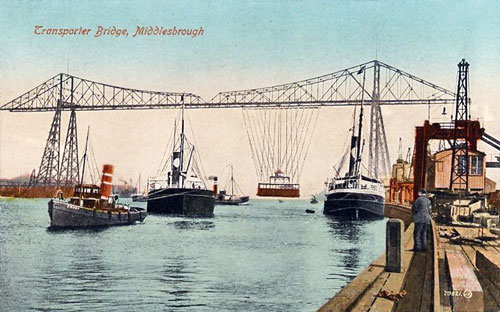
Warrington Transporter
Bridge
The Warrington Transporter Bridge (or Bank Quay
Transporter Bridge) across the River Mersey is a structural steel
transporter bridge with a span of 200 feet. It is 30 feet wide, and 76 feet
above high water level, with an overall length of 339 feet. It was built in
1915 and, although it has been out of use since circa 1964, it is still
standing.
It was originally one of two such bridges across the
Mersey, the other one being the
Widnes-Runcorn Transporter Bridge (built in 1905). It was designed by
William Henry Hunter and built by William Arrol.It
is privately owned and was built to connect the two parts of the large
chemical and soap works of Joseph Crosfield and Sons. It was originally used
to carry rail vehicles up to 18 tons in weight, and was converted for road
vehicles in 1940. In 1953 it was modified to carry loads of up to 30 tons.
English Heritage designated the bridge as a Grade II*
listed building, and as a scheduled monument. Because of its poor condition
it is on their Buildings at Risk Register. (Ref: Wikipedia)
Warrington transporter bridge
Photos: © Jonathon Brown,4th December 2016
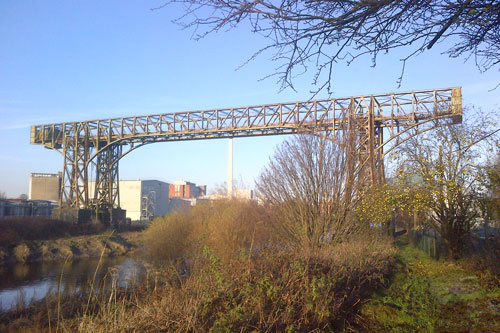
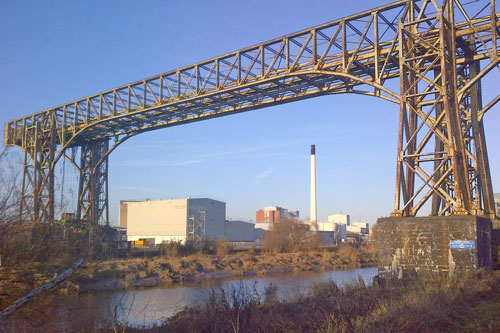
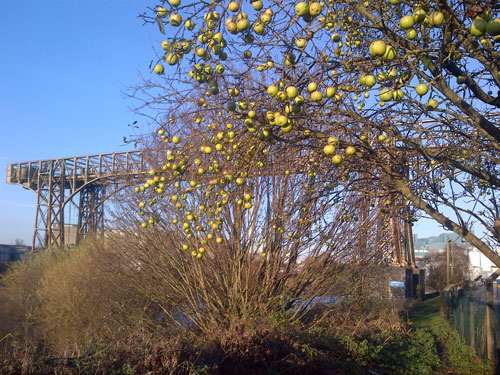
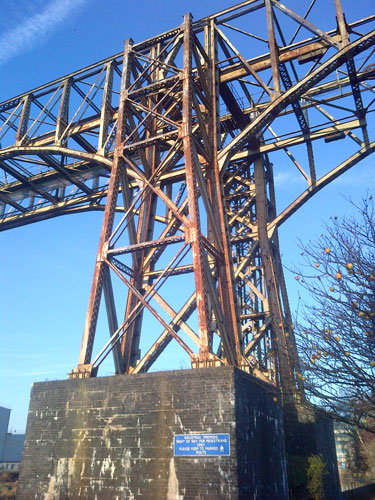
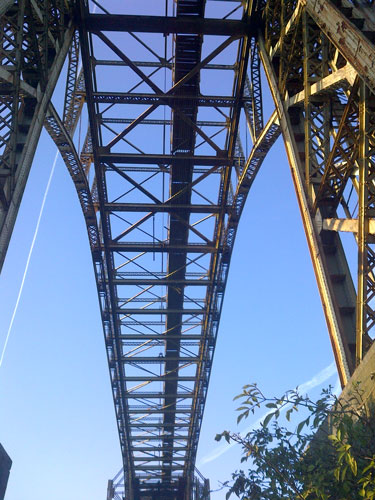
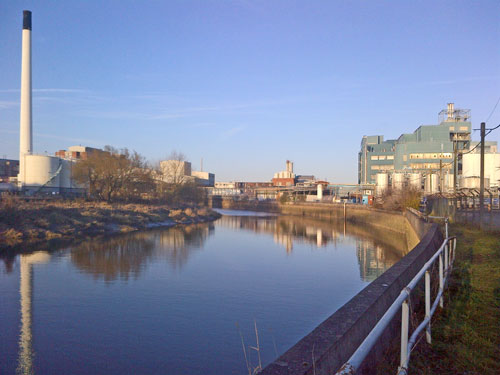
London Royal Victoria Dock Bridge
The Royal Victoria Dock
Bridge is a signature high-level footbridge crossing the Royal Victoria Dock
in the Docklands area of east London designed by London-based architects and
designers Lifschutz Davidson Sandilands. The bridge provides a direct link
from Eastern Quay and Britannia Village, a residential development to the
south of the dock, to the ExCeL Exhibition Centre and Custom House station,
both situated to the north of the dock.
The bridge takes the form of an inverted Fink Truss, with six masts rising
above the deck at 25.5 m (84 ft) centres, varying in height from almost 30 m
(100 ft) at each end to just 10.6 m (35 ft) for the smallest masts. The
shape of the bridge is designed to reflect the masts of the sailing boats
which use the dock. The bridge crosses the dock with a clearance of some 15
m (50 ft) above the water, a height which was necessary to allow yachts to
pass below the bridge deck. The bridge is accessed at each end by lift and
stair towers.
The bridge was completed in 1998, at a cost of £5 million. A second
construction stage envisaged in the bridge's design involves the addition of
a glass passenger cabin travelling on a rail of the underside of the deck to
make this a transporter bridge. After 14 years it seems unlikely this will
now happen. (Ref: Wikipedia)
The Royal Victoria Dock Bridge
Photo: © Ian Boyle, 11th November 2011
